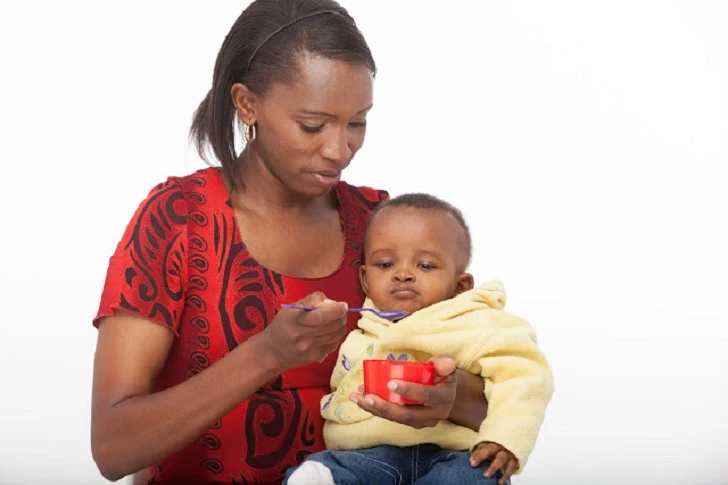Introducing your baby to solid foods – sometimes called weaning or complementary feeding – should start when your baby is around six months old. It's a really important step in their development, and it can be great fun to explore new flavors and textures together.
Weaning is the gradual replacement of breast milk with food, some parents however tend to wean their children as early as three months.
It is recommended by doctors to breastfeed exclusively for six months This is essential as the breast milk has enough nutrients and aids in boosting the immunity of a child. However when the child gets to six months, their appetite increases, and its time to introduce solid food, cereals, or fruits.
The World Health Organization (WHO) currently recommended that solids are introduced at around six months. This is necessary to meet a child's nutritional and developmental needs. A wide variety of food - with an appropriate range of texture and consistency - should be introduced so that, by 12 months, the child is consuming a range of their family's food.
Two key reasons to start complementary feeding:
- Breastfeeding alone is insufficient to meet the increased nutritional requirements in the rapidly developing child.
- It is important that a child is introduced to solid food with new tastes and textures to develop healthy eating habits.
When should I introduce solid foods?
Developmental milestones — the best time to start solid foods depends not only on your child's age, but also on your child's ability to sit up, support the head, and meet other developmental milestones. These apply to all children, including those who have delays with gross motor skills. The infant should be able to do the following:
- Sit with support
- Have good head and neck control
- Push up with straight elbows from lying face down
- Show readiness for varied textures of supplemental foods by placing their hands or toys in their mouth
- Lean forward and open the mouth when interested in food, and lean back and turn away when uninterested in the food or not hungry
Additional skills are necessary before an infant should be allowed to progress to eating finger foods:
- By 8 to 10 months, infants begin to have the skills necessary to eat finger foods independently (can sit independently, grasp and release food, chew food [even without teeth], and swallow)
- By 12 months, fine motor skills improve, allowing the child to grasp pieces of food between two fingers.
How to introduce solid foods at six months
The dilemma most mothers have is deciding which is the best food to start weaning a child with, I know this as I had it with my firstborn. One can ask for advice from friends and family but remember every child is unique, whichever food you decide to wean the child with always ensure you check out for allergies.
You can start with:
- An instant formula, two or three tablespoons a day
- Infant porridge that is found in supermarkets but look out for brands and follow instructions, give the child once a day 3-5 days in a week.
- Introduce a blended fruit like pawpaw, avocado, or mango, keep it diluted and easy to consume.
Remember the child is learning new foods and might take time to adjust to the new meal. Be patient and consistent but lookout for anything that might suggest the child has an allergy. An allergy reaction is common to children, so do not be alarmed but ensure the child is checked by a doctor who can prescribe a remedy.
Ensure to supplement the solid food with breast milk, this gives the child comfort in knowing that the bonding time is still available. It also allows them a chance to try the new meal and even like it.
For a 6-month-old child the three options provided are the best but as time goes by you can introduce other foods such as mashed potatoes with spinach, pumpkin, and cereals such as Weetabix.
Things to note
- Always use a small spoon when feeding the baby with solid food, this is important so that they can learn to differentiate between food and milk.
- Make feeding fun so that the child can look forward to it
- Keep the highest hygiene, ensure the utensils used are clean to avoid contamination which might lead to diarrhea.
Things to avoid
- Avoid giving cow milk or milk products like cheese until the child is much older
- Avoid overfeeding the child, measure each amount and be consistent
- Do not introduce all of the foods at once try one for two weeks and see the progress, if the child likes it continue with it and then introduce the other.
I remember the first time I made porridge for baby, looked like Ugali. I just did not understand why he was crying after, I guess his stomach got a shocker. I wish you the very best in your journey of weaning, may you discover the joy in preparing food that is healthy and nutritious to your child.
